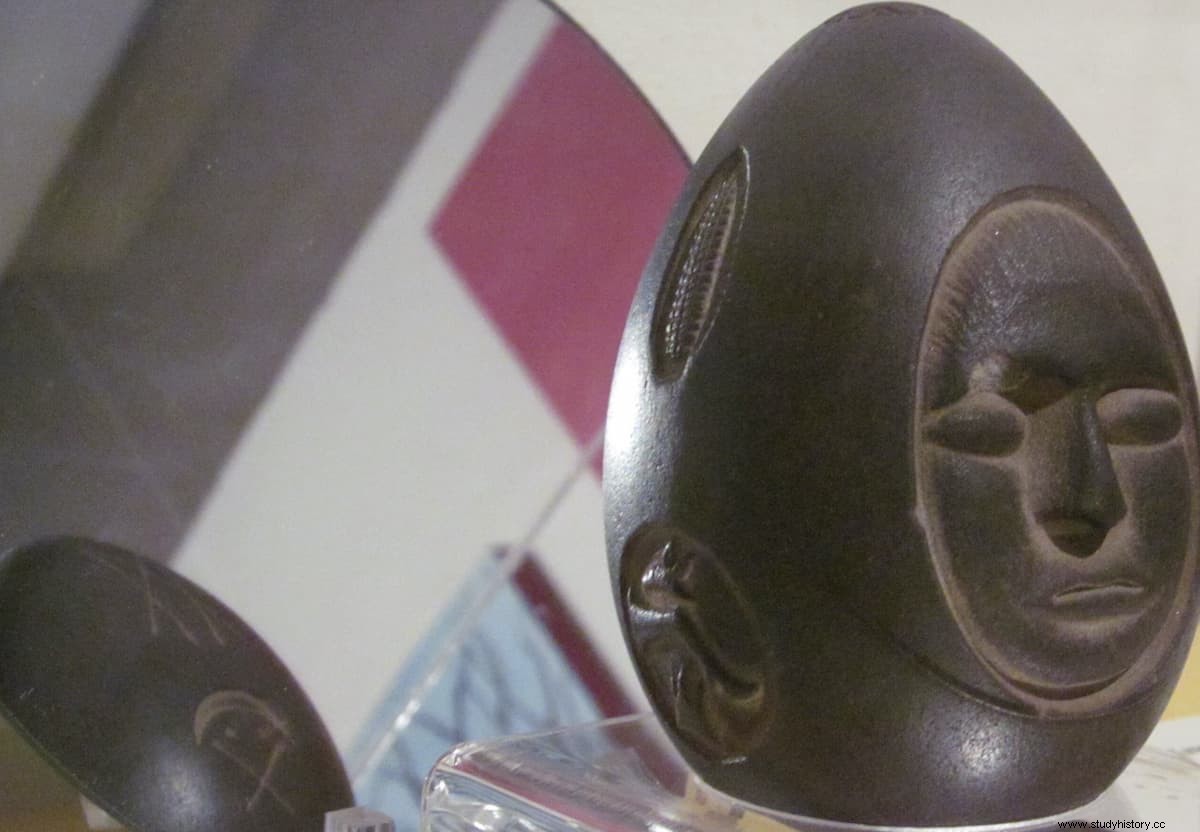In 1872 workers digging a hole for a fence post in the town of Meredith, New Hampshire, near the shore of Lake Winnipesaukee, found a curious and strange buried stone. It was given to his patron, businessman Seneca Ladd, and upon his death it became the property of one of his daughters, who finally donated it to the State Historical Society.
The artifact is ovoid in shape and measures just 10 centimeters high by 6.4 thick, and weighs approximately half a kilo. It is dark in color and features various carved symbols that appear to represent a human face on the front and more abstract ones, such as inverted arrows, a moon, dots, and a spiral, on the back. But also, on the sides, what appears to be a tipi and an ear of corn.

The stone is drilled through its center from top to bottom, the upper hole being 3.2 millimeters wide and the lower one 9.5 millimeters wide, which would indicate that it was drilled from both ends but with different bits.
Both the age and the origin of the stone, and of course its purpose, are unknown. At the time of discovery it was thought that it could be a kind of sacred stone of the natives. Some believe that it is an OoPArt (Out of Place Artifact), that is, an artifact out of place found in an unusual or impossible context, something certainly unlikely.
Others that it is a hoax or deception. Among the latter, archaeologist Richard Boisvert, who analyzed the stone in 1994, suggested that the holes appeared to have been made with modern tools. Even that it should have been placed on a metal axis.

Be that as it may, there are multiple theories about this black quartzite stone, which is unlike anything archaeologists have found in North America. It has been attributed a Celtic and Inuit origin. It has also been proposed that it was created to commemorate a peace treaty between tribes.
Historian Joe Graveline believes it to be an object used by Native Americans to aid childbirth. According to Graveline, after heating it, it would be placed inside the laboring woman to help her relax her muscles. He also believes that the place where it was found was a tomb, in which the stone would have been placed as an offering.
The most accepted hypothesis today is that it is the work of an unknown craftsman, possibly made at the end of the 19th century, and that it was somehow buried (intentionally or not) on the shore of Lake Winnipesaukee.
The stone, which doesn't appear to have ever been thoroughly analyzed (much less scientifically dated) can be seen at the New Hampshire Museum of History, where it is a favorite with visitors. /P>
Fonts
Native Insight:An hypothesis about 'The Mystery Stone' / The Lake Winnipesaukee Mystery Stone / New Hampshire Historical Society / Wikipedia
